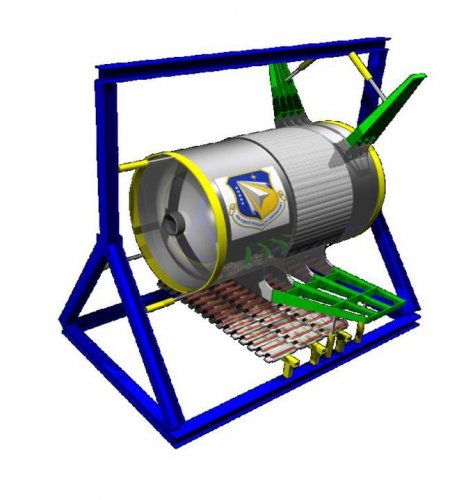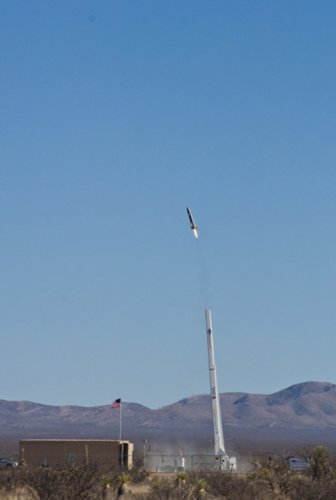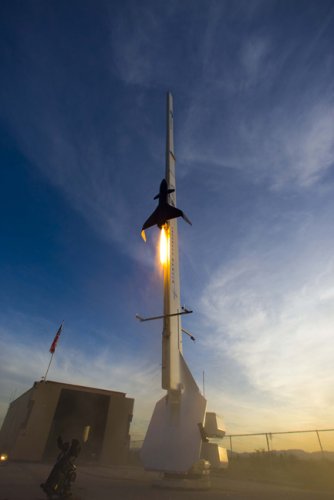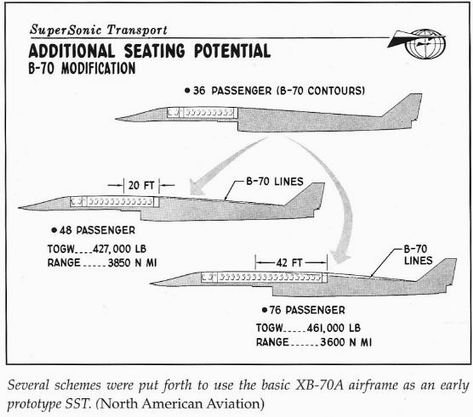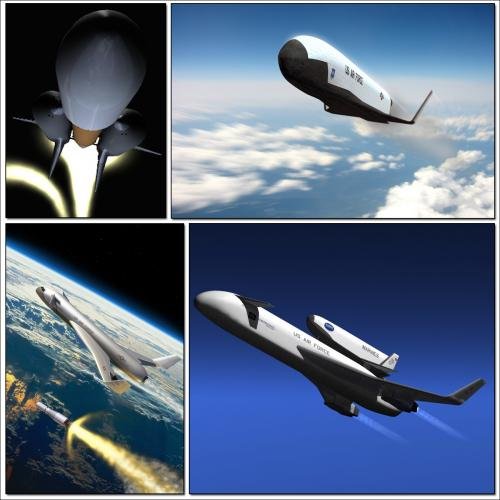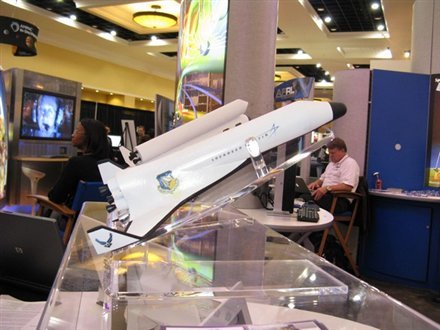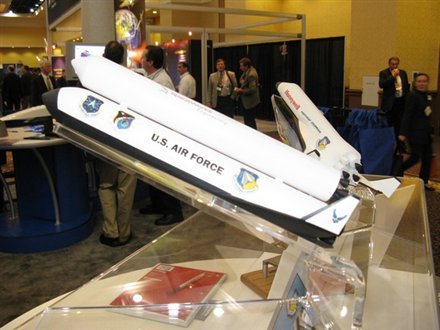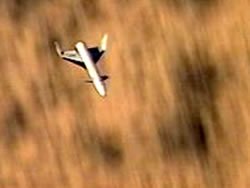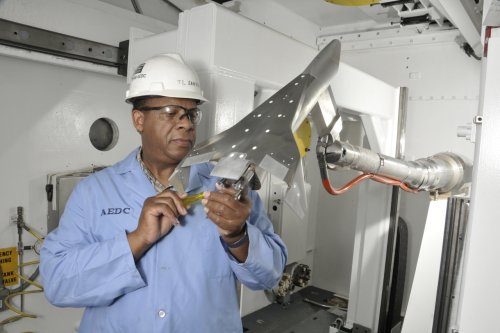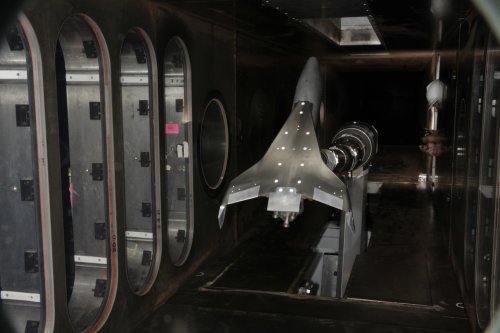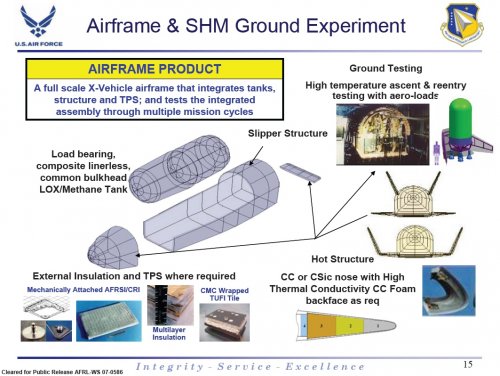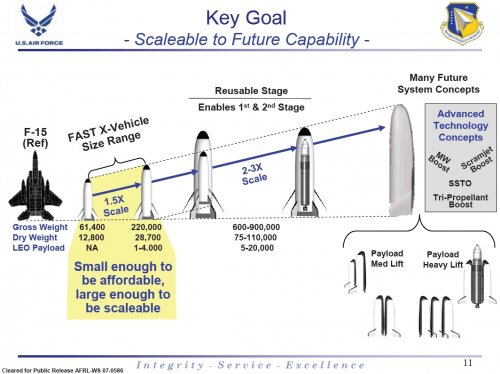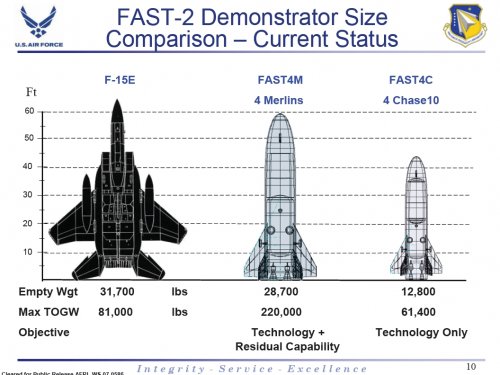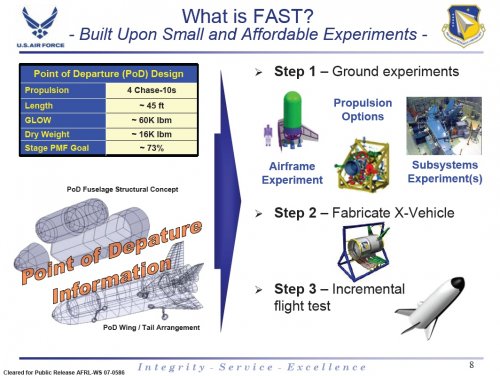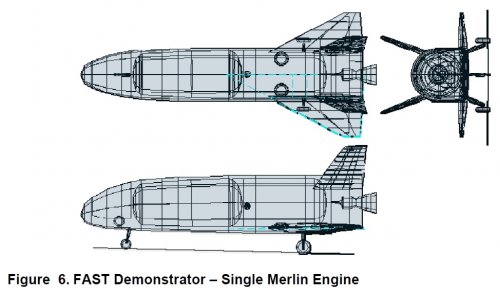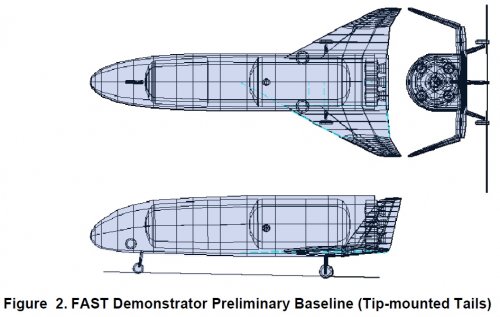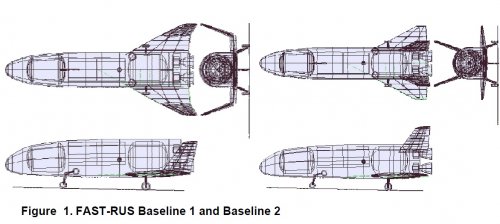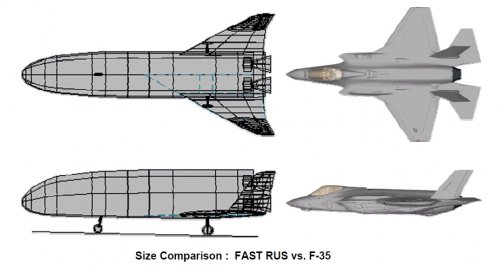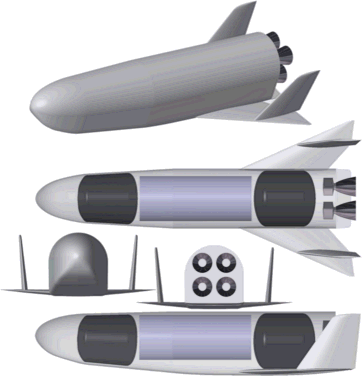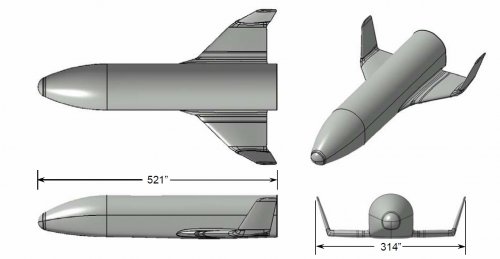- Joined
- 26 May 2006
- Messages
- 33,572
- Reaction score
- 13,700
FAST program seeks to mature hypersonic air vehicles and space launch technologies
AFRL Air Vehicles News and Accomplishments, January 2008
AFRL is teaming up with a number of aerospace industry contractors to begin ground experiments as part of the Future-responsive Access to Space Technologies (FAST) program. The FAST program seeks to mature hypersonic air vehicles and space launch technologies by designing, developing, and then testing the technologies in a series of ground-based experiments. These technologies could potentially be used on a variety of future reusable high-speed air and space vehicles.
“We want to deliver a set of completed experiments to the leadership that allows them to make decisions on a group of technologies for a variety of air and aircraft-like vehicles,” says FAST program manager Maj Nidal Jodeh.
Three sets of ground experiments are planned as part of the FAST program. These experiments are: Design and Operability, Composite Airframe Development, and Integrated Adaptive Guidance and Control (IAG&C). The Design and Operability experiments will focus on subsystems and integration, and how to increase the efficiency of flight and ground operations. The Composite Airframe Development experiments will look at airframe components such as thermal protection systems and load-bearing fuel tanks. Improved techniques for removing, replacing, and attaching thermal protection systems to the vehicle will be studied, as well as the capability of the fuel tank to bear structural loads. The IAG&C experiments focus on the capability of avionics to perform systems health monitoring and compensate for off-nominal flight conditions. The ground experiments are currently in the design phase. All three ground experiments will be conducted concurrently, and data will be shared among the various contracting teams. IAG&C tests will be conducted through hardware-in-the-loop simulations, providing a realistic testing environment in which actuator components are tested in the loop with computer simulations. Although there is no specific vehicle platform currently planned to utilize the FAST technologies, Maj Jodeh says the ultimate goal of the project is to deliver technologies to enable affordable and responsive space access while advancing hypersonic air vehicle technologies. FAST is a joint effort between AFRL and a number of contractors, including Lockheed-Martin, Northrop Grumman, Honeywell, and the University of Dayton Research Institute.
-----------------------------------------------------------------------------
http://discoveryenterprise.blogspot.com/2008/08/more-secret-spaceplanes.html
picture: A concept drawing of the FAST structural tank test rig.
AFRL Air Vehicles News and Accomplishments, January 2008
AFRL is teaming up with a number of aerospace industry contractors to begin ground experiments as part of the Future-responsive Access to Space Technologies (FAST) program. The FAST program seeks to mature hypersonic air vehicles and space launch technologies by designing, developing, and then testing the technologies in a series of ground-based experiments. These technologies could potentially be used on a variety of future reusable high-speed air and space vehicles.
“We want to deliver a set of completed experiments to the leadership that allows them to make decisions on a group of technologies for a variety of air and aircraft-like vehicles,” says FAST program manager Maj Nidal Jodeh.
Three sets of ground experiments are planned as part of the FAST program. These experiments are: Design and Operability, Composite Airframe Development, and Integrated Adaptive Guidance and Control (IAG&C). The Design and Operability experiments will focus on subsystems and integration, and how to increase the efficiency of flight and ground operations. The Composite Airframe Development experiments will look at airframe components such as thermal protection systems and load-bearing fuel tanks. Improved techniques for removing, replacing, and attaching thermal protection systems to the vehicle will be studied, as well as the capability of the fuel tank to bear structural loads. The IAG&C experiments focus on the capability of avionics to perform systems health monitoring and compensate for off-nominal flight conditions. The ground experiments are currently in the design phase. All three ground experiments will be conducted concurrently, and data will be shared among the various contracting teams. IAG&C tests will be conducted through hardware-in-the-loop simulations, providing a realistic testing environment in which actuator components are tested in the loop with computer simulations. Although there is no specific vehicle platform currently planned to utilize the FAST technologies, Maj Jodeh says the ultimate goal of the project is to deliver technologies to enable affordable and responsive space access while advancing hypersonic air vehicle technologies. FAST is a joint effort between AFRL and a number of contractors, including Lockheed-Martin, Northrop Grumman, Honeywell, and the University of Dayton Research Institute.
-----------------------------------------------------------------------------
http://discoveryenterprise.blogspot.com/2008/08/more-secret-spaceplanes.html
picture: A concept drawing of the FAST structural tank test rig.

